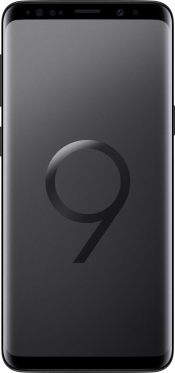Samsung Galaxy S9 Review
What is the Samsung Galaxy S9?
With less than a month to go until it’s rumoured the Korean company is going to launch the Samsung Galaxy S10, is the Galaxy S9 still worth it?
Rumours point towards a big redesign – similar to what Apple did with the iPhone X – for the tenth anniversary of arguably the biggest Android phone around. Potential buyers can look forward to a new design with the camera built right into the display, in-display fingerprint tech and a much higher price.
The likely higher price of the S10 might make the S9 a better buy for certain people. Here’s what we thought of Samsung’s 2018 flagship.
Samsung Galaxy S9 – Design
With the Galaxy S8 last year, Samsung introduced a shift in phone design that followed through market-wide. A big bezel was out, to be replaced by a larger screen that pushed right to the edges. It was a much-needed change in a market where phones had started to feel stale.
Related: Google Pixel 3
The Galaxy S9 retains this familiar overall look, which is hardly something to complain about when you consider that, a couple of years on, the S8 is still one of slickest phones around.

The S9 sees the bezel thickness above and below the display reduce further. In addition, the fingerprint scanner has been moved to a more suitable location beneath the camera, rather than being tucked tightly beside it. However, it still feels a tad on the small side, and there’s noticeable lag as it jumps you to the homescreen.
Related: Black Friday SIM-only deals
The metal and glass body retains its curved display, IP68 water-resistance rating and microSD card slot. The aluminium rim has been strengthened and the Gorilla Glass 5 coating the screen has been thickened. As someone who smashed a Galaxy S8 after knocking it off a bed onto a carpeted floor, this is a welcome upgrade.
Related: Best smartphones
You’ll find a dedicated Bixby button below the volume rocker, with the lock-switch on the other side. I dislike the fact that the extra button can only be used with a virtual assistant – I turned it off completely after a day of use – but Bixby remains a huge push for Samsung and, hopefully, it might get a bit better when version 2.0 hits later in the year.

Having used both the Galaxy S9 and Galaxy S9 Plus, I much prefer the smaller model over its larger brother. I think the 5.8-inch display is big enough, while the phone itself is perfectly sized to use in one hand. There are lots of Android phones that are bigger than this, but the S9 sets itself apart by fitting all the high-end specs into something a little smaller.
Related: What is Dolby Atmos?
Samsung Galaxy S9 – Screen
Like all of Samsung’s recent flagships, the S9’s display draws you in instantly with its rich colours and fantastic contrast. It’s still a slightly curved 5.8-inch AMOLED quad-HD+ panel, and even though little has changed aside from a slight bump in brightness, it’s one of the best displays I’ve seen.
What impresses most about the screen is the customisation options on offer. In its default ‘Adaptive’ mode colours are saturated and rich, with a dominant blue hue – personally, I find this slightly too much. Switch to DCI-P3 colour gamut covering ‘AMOLED cinema’ mode and everything feels easier on the eyes. It’s even possible to customise the colours, reducing the amount of blue, green and red.
Related: What is HDR?

There’s full support for mobile HDR10 and the S9 can stream HDR content from sources such as Netflix and Amazon Prime. This provides movies and TV shows with better contrast and enables them to use a wider gamut of colours. Watch a programme that features numerous dark scenes, such as Altered Carbon, and you’ll notice the difference right away. This is far from the first phone to boast HDR support, but I haven’t yet seen a phone display it as well.
A blue light filter mode makes this super-bright screen much better for viewing before you sleep by turning everything orange. This can be scheduled to automatically turn on each night.
Viewing angles are good, as is outdoor visibility, but you’ll notice a slight blue shift along the curved edges of the display. This is one of the downsides of OLED; you’ll see it on most phones using the tech. Samsung’s displays do deal with the issue far better than those produced by LG – and used on the Google Pixel 2 – and you’ll really only notice the blue if you go looking for it.
Related: OnePlus 6T Review
The post Samsung Galaxy S9 Review appeared first on Trusted Reviews.



No comments